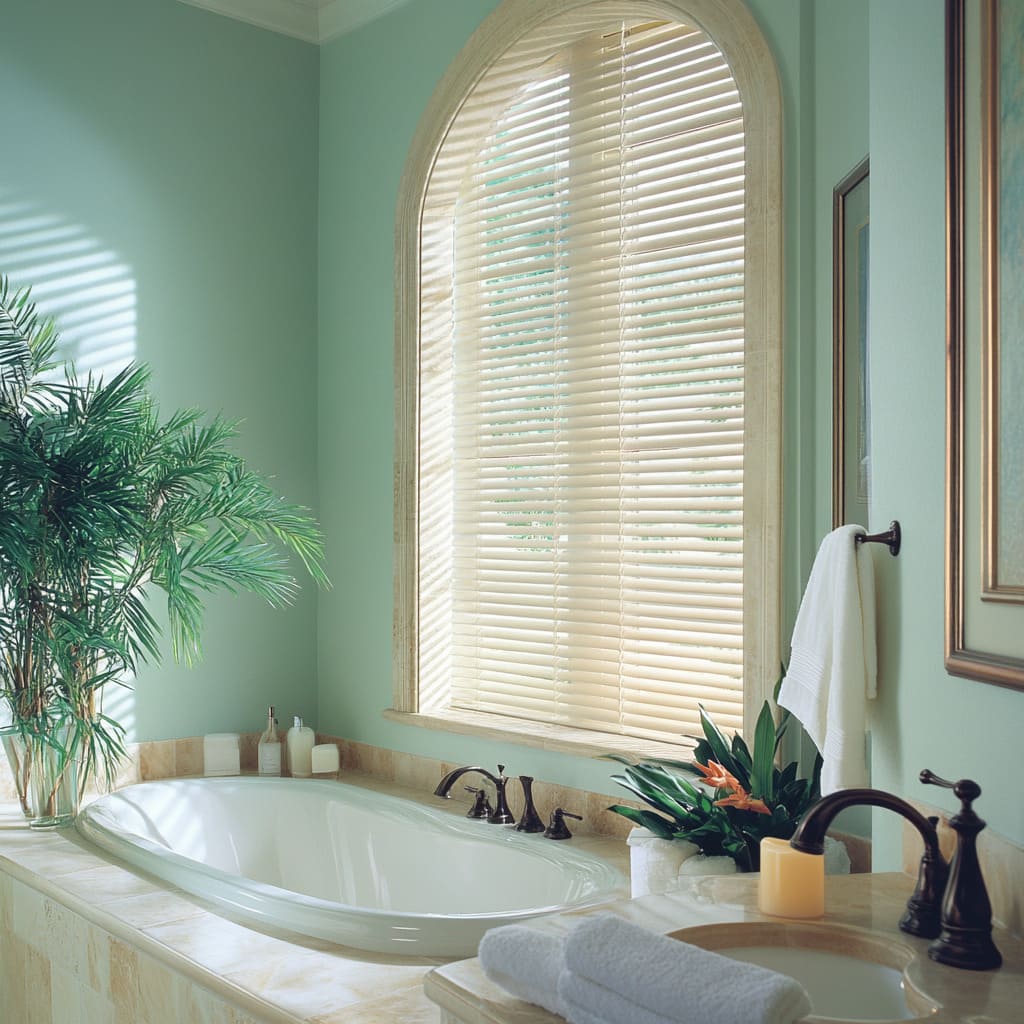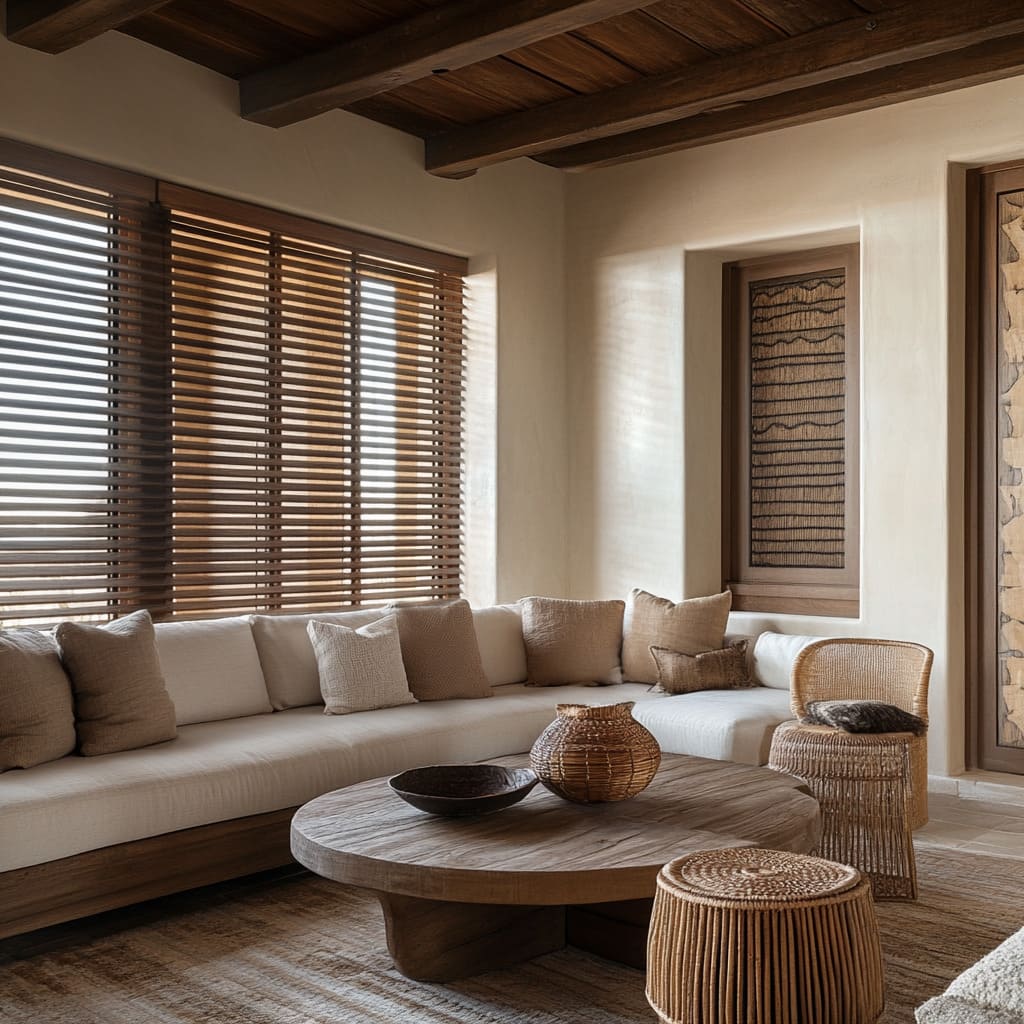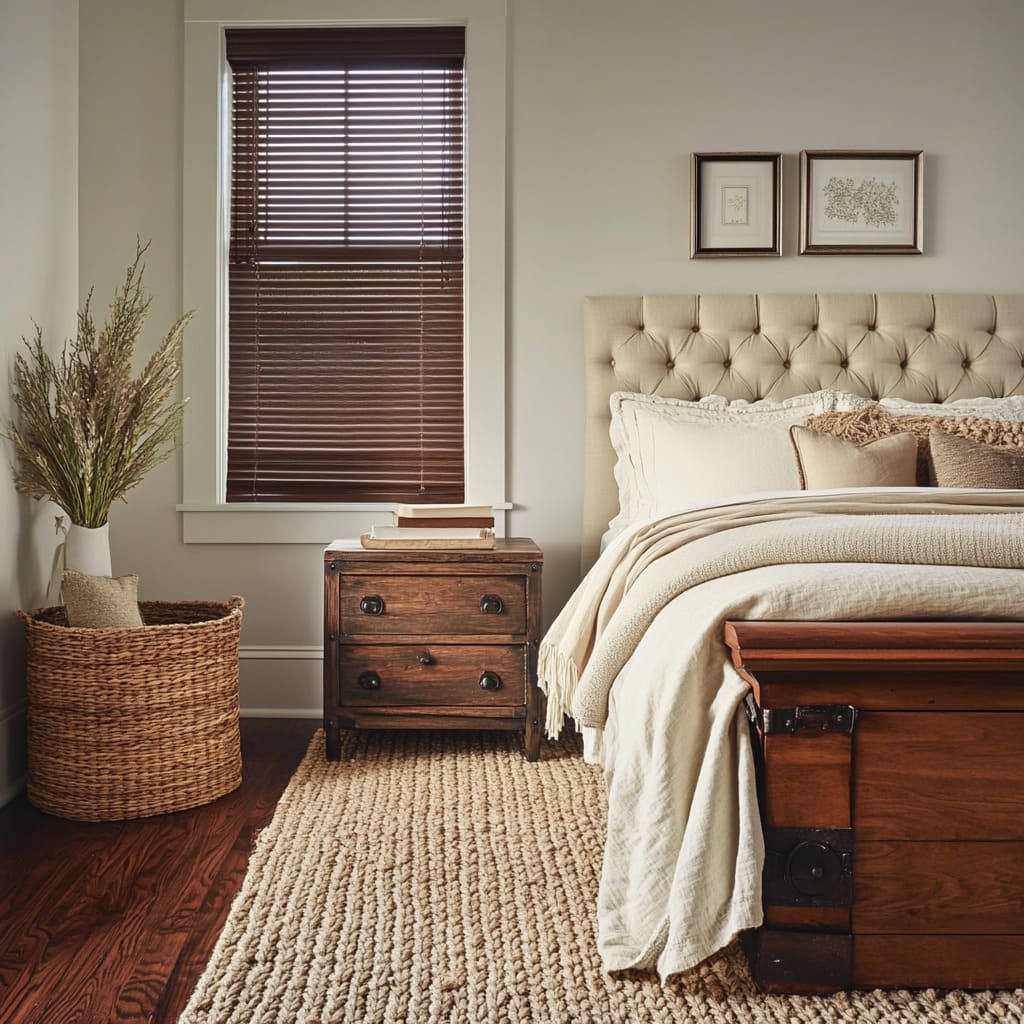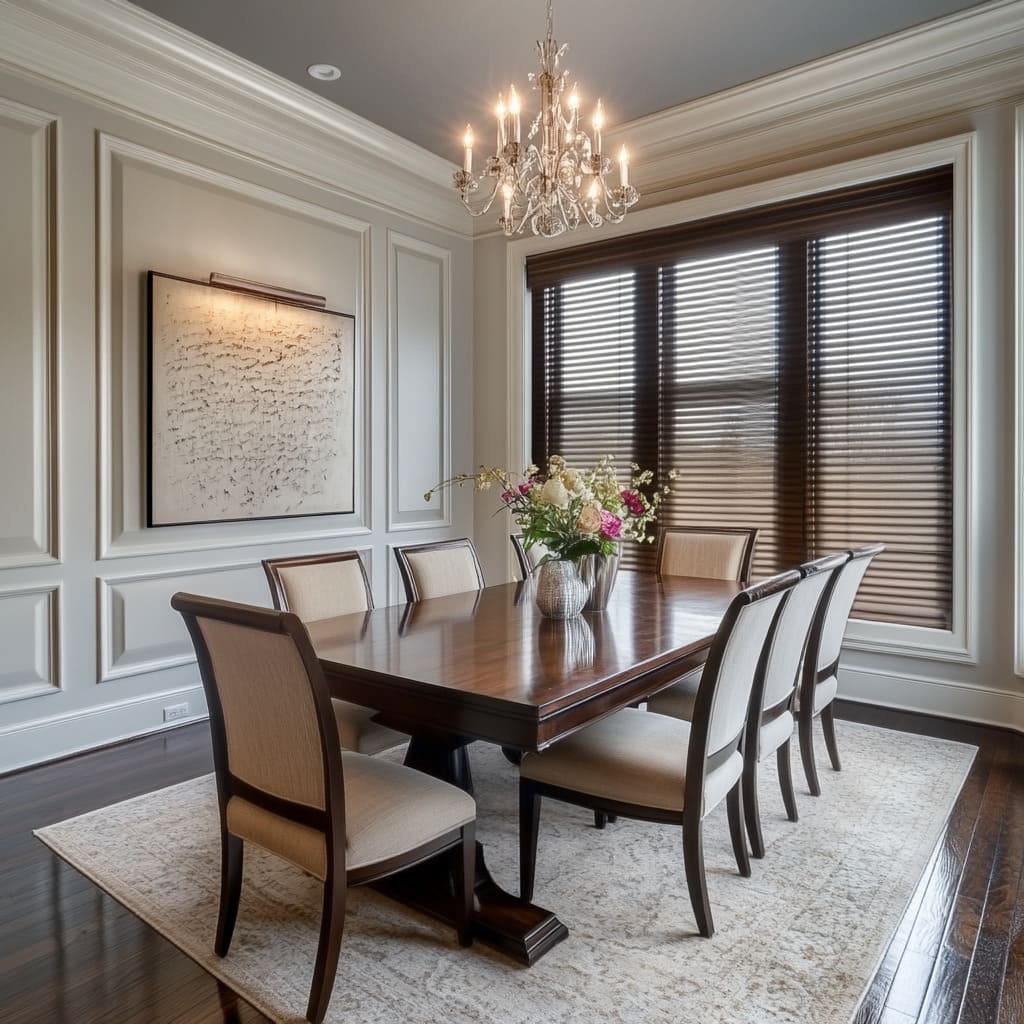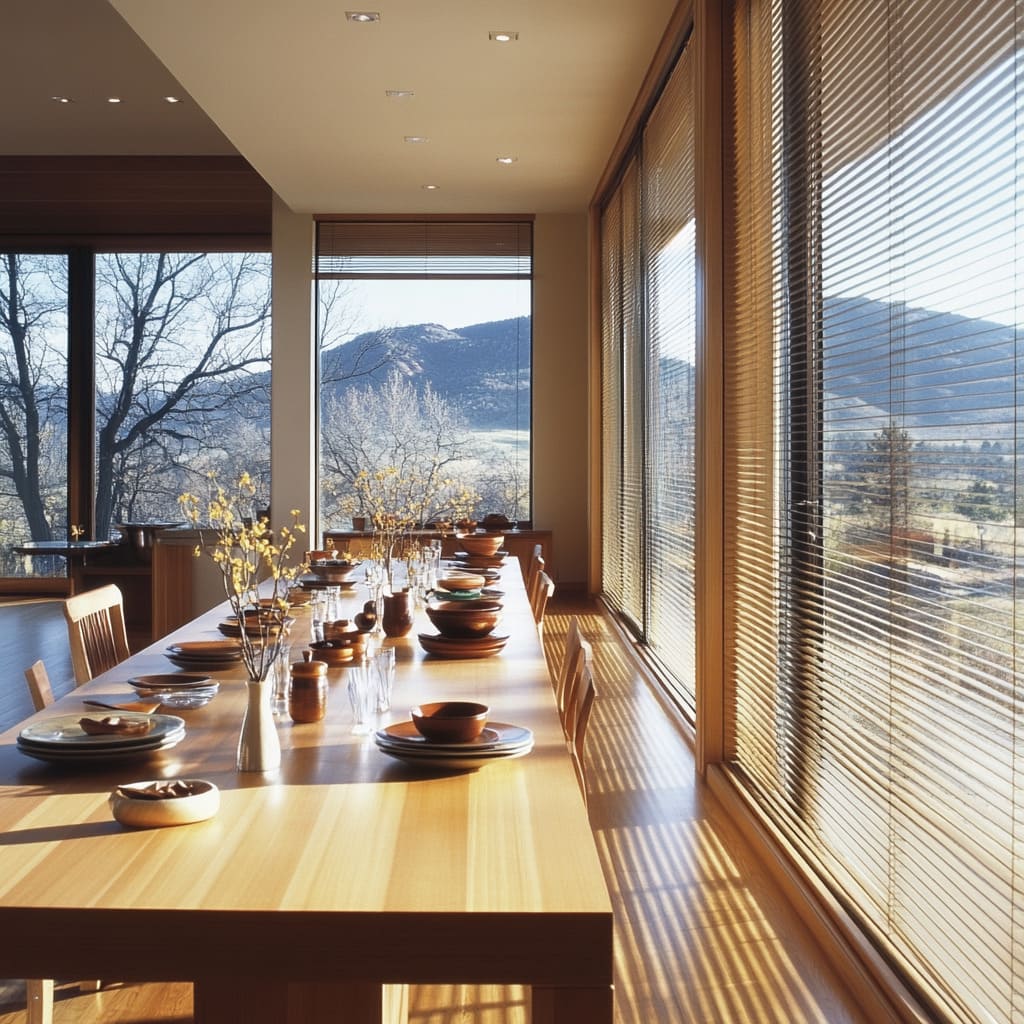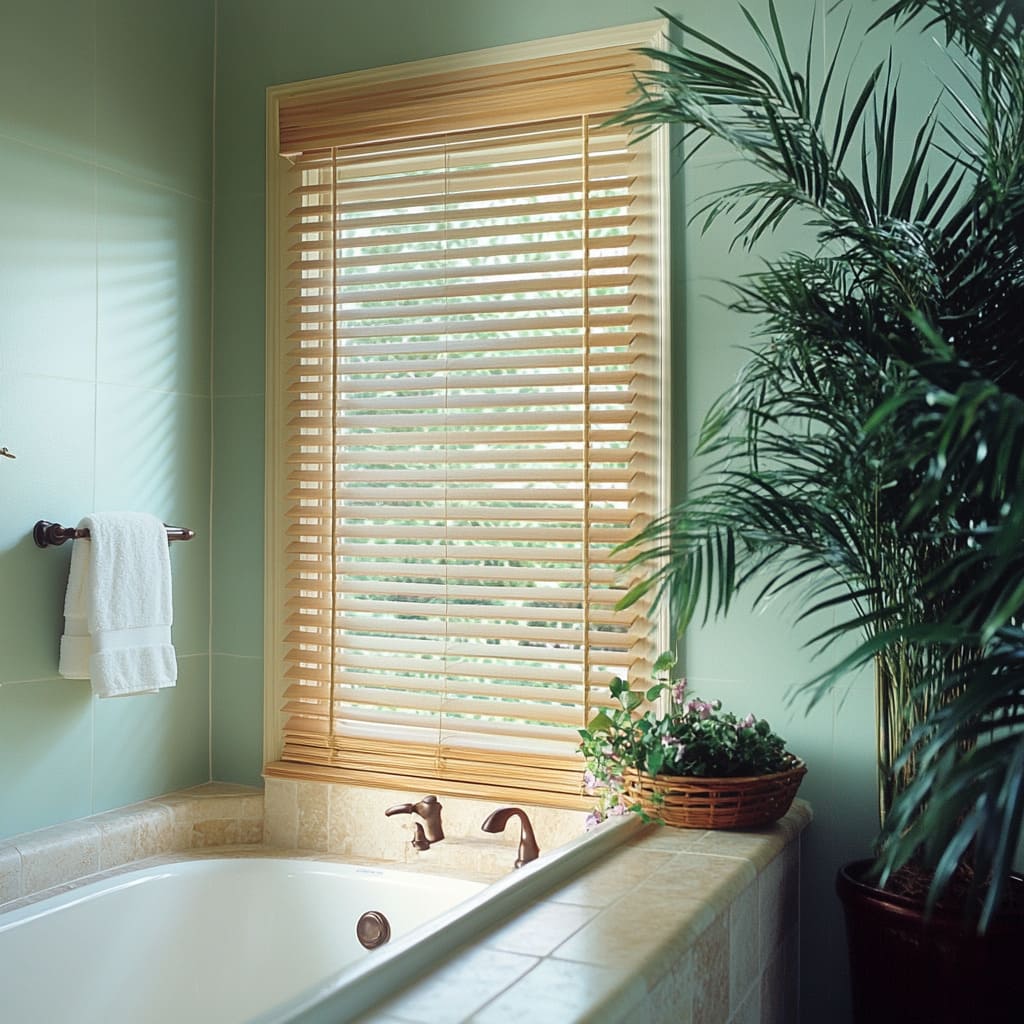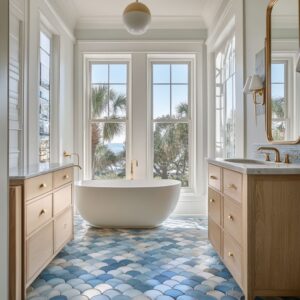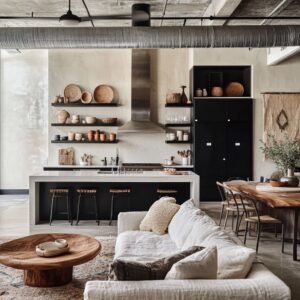Wood blinds are design elements that perfectly straddle form and function. They offer a certain natural elegance to a room, boosting warmth and giving the space an organic feel.
Across the Midwest, the landscape is punctuated by wide-open spaces, rolling plains, and a certain rustic charm. Wood blinds perfectly compliment the region’s natural aesthetic and bring it into the home.
What Are Wood Blinds?
Wood blinds are a type of window covering. They are made from natural wood—usually basswood, oak, or cherry—and consist of horizontal slats that can be titled to control the flow of light.
They can be raised to let in sunlight or lowered for privacy and insulation. Wood blinds made with real wood have natural grain patterns, adding a touch of rich texture to any space where they are present.
Faux wood and synthetic alternatives are on the market, but natural wood blinds will always stand out as an interior design favorite for the best effect.
Pros and Cons of Wood Blinds
Some interior designers and homemakers swear by wood blinds to boost a room’s ambiance while having functional blinds to block light. Others may see them as outdated and unnecessarily expensive.
While some opinions on wood blinds come down to personal preference, there are undeniable pros and cons.
Pros:
- Natural design: Wood blinds provide a natural beauty aesthetic to rooms in which they are used, tying together a classic or modern rustic home design. The texture and appearance bring the outdoors inside.
- Durability: Wood blinds made with high-quality wood are sturdy and last forever. With proper care, they stand the test of time, making them an excellent investment.
- Insulation: Wood blinds can help insulate the home, keeping it more relaxed in the summer and warmer in the winter. This pro cannot be overstated in the Midwest, where temperatures often fluctuate.
- Customization: Wood blinds can be stained or painted to match the rest of the home’s decor. They offer design versatility for a dark or light aesthetic.
- Increased Home Value: Wood blinds’ classic and timeless appeal can make them attractive features for prospective buyers.
Cons:
- Cost:Natural wood blinds are costly. The initial cost can put some people off, causing them to opt for more affordable options like faux wood or vinyl blinds.
- Maintenance: Wood blinds can warp or crack if exposed to moisture. They must be adequately cared for, especially in humid places of the home (such as the laundry room, kitchen, or near the shower).
- Weight: Wood blinds are heavier than other window treatments. They should be installed with care and may be challenging to operate on more oversized windows.
How to Choose the Right Wood Blinds
Factors to consider when buying wood blinds for your Midwest home include wood type, finish, slat size, and mounting style. While some choices are based on design preference, others are based on functionality.
It’s always best to consult an installation expert before purchasing to ensure they fit into your windows correctly—those in Missouri or near Kansas City can search “Kansas City wood blinds” to find a vast array of service providers.
Wood Type & Finish
The most popular type of wood is basswood, which comes from a North American tree Tilia americana. Basswood is light and durable.
Other options include oak and cherry, which are suitable for designers looking for heavier, more robust blinds. The finish on wood blinds can significantly impact their overall look.
Lighter finishes give a sense of airiness and openness, while darker finishes convey richness and depth. In homes with a lot of natural light, lighter blinds can work to open the space, while darker blinds can provide a dramatic contrast.
Slat Size & Mounting Style
Wood blinds come in various slat sizes, usually ranging from 1 inch to 2. 5 inches.
Larger slants give a room a more modern look, while smaller slats offer a more traditional look. Some blind slats have UV protection to prevent fading, which can be an excellent choice for large and small blinds to preserve their appearance.
In terms of installation, wood blinds can be fit on inside mounts to fit within the window frame for a clean, tailored look. Outside mounts make windows appear larger and more dramatic.
In the Midwest, many professionals work with blinds that can provide consultations and much-needed advice.
Conclusion
Wood blinds are versatile, can be placed in many rooms in the home, and paired with many different design elements. They are also functional, keeping out light and heat while keeping in cool air and privacy.
In the Midwest, wood blinds perfectly match the region’s natural beauty. No matter which color or style you choose, wood blinds instantly enhance a room’s elegance.
Their durability makes them an excellent overall investment—whether you pass your home down to your kids or put it up for sale, no one can resist the hominess of timeless wood blinds.

